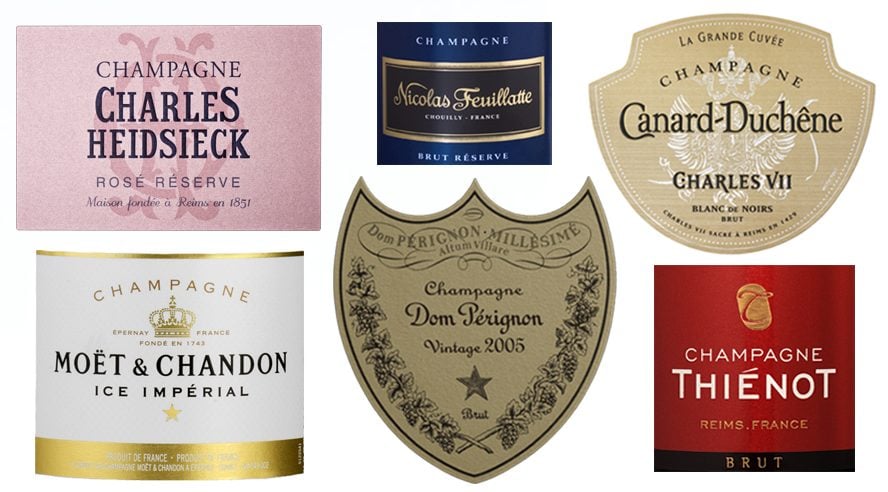
Did you know that a champagne label gives valuable information? The label contains the mandatory information about the origin of the wine and its production, as well as other information. Where is the champagne produced and by whom, what is the type of champagne, what is the dosage, in what year was the disgorgement carried out? Here are some tips on how to read a champagne label!
The first step in reading a label is the appearance of the word CHAMPAGNE, which guarantees the origin. Champagne houses are not obliged to use AOC. Indeed, Champagne is itself a designation of controlled origin. (1)
Next, the name of the producer or brand is clearly indicated. The big brands proudly display it. (2)
The law also obliges Champagne houses to specify the place of production of the Champagne. (3)
The dosage, i.e., the number of grams of sugar per liter, must also appear on the label or back label. This dosage varies according to the type of champagne. For example, the brut will have between 8g and 12g of sugar per liter, while the No Dosage has no added sugar.
Some non-mandatory but interesting indications may also appear on the label or back label, such as the levels of the Champagne crus: Grand Cru, Premier Cru and other Crus. However, this scale is strongly contested. The composition of the cuvées must appear: Blanc de Blancs, Blanc de Noirs, Vintage… (4) Or the disgorgement date, which shows how long the cuvée has been aged in the cellars of the Champagne house.
The legal statement “Consumption of alcoholic beverages during pregnancy, even in small quantities, can have serious consequences for the health of the child” is not compulsory but strongly recommended.
On the majority of the bottles, we can see the mention “Produit de France”; (5) bringing an additional confirmation on the origin of the product.
Finally, on the label or back label, depending on the house’s preferences, there are initials that refer to the professional category of the house. There are 7 categories:
NM: Négociant Manipulant (Manipulating trader). This is a natural or legal person who, in addition to the grapes from his own vineyards, if he has any, buys grapes, musts or wines and ensures their production on his premises.
RM: Récoltant Manipulant (Harvesting manipulating). It ensures the elaboration, in its premises, of the only wines resulting from its harvest.
RC: Récoltant-Coopérateur (Harvesting-cooperator). He delivers grapes from his harvest to his cooperative and then takes back from his cooperative musts or wines in the process of being made or ready to be marketed.
CM : Coopérative de manipulation (Manipulating cooperative). It elaborates on its facilities, the wines coming from the grapes of its members.
SR: Société de Récoltants (Society of harvesters). It elaborates the wines coming from the harvest of its members belonging to the same family and markets them.
ND : Négociant distributeur (Distributing trader). It buys wines in finished bottles on which it affixes a label on its premises.
MA : Marque d’Acheteur (Buyer’s brand). The producer, whether he is a trader, harvester or cooperative, sells finished bottles labelled with the brand name of the customer who buys the bottles.
Unlike the label, the back label is not mandatory. It simply provides additional information about the champagne and the house. In some cases, the back label gives explanatory notes, food and wine pairings, indications on the grape varieties or even recommendations for tasting. Furthermore, this means of communication can include: a multilingual translation, a picture, a signature or even a QR code and becomes the link to an virtual reality.
Photos Credits Veuve Clicquot and Krug Houses
Our approach guarantees quality, simple ordering, secure payment and careful delivery within 5 to 10 days in Europe.
Since 2010, our carefully selected wines have come from the most prestigious Champagne Houses.
Our Champagne experts will advise you on the success of your private and professional projects.
Chic boxes, personalization, attentions... the pleasure is as much to offer as to receive.
Copyright 2022 © all rights reserved. Champmarket.


ALCOHOL ABUSE IS DANGEROUS FOR YOUR HEALTH. DRINK RESPONSIBLY.